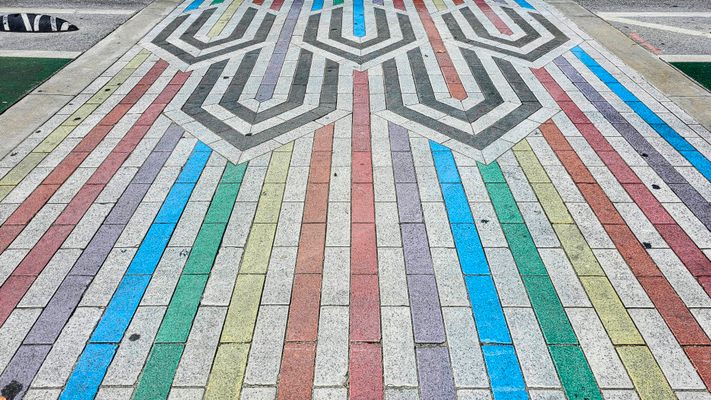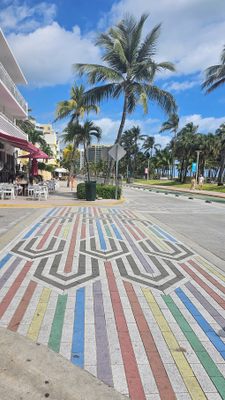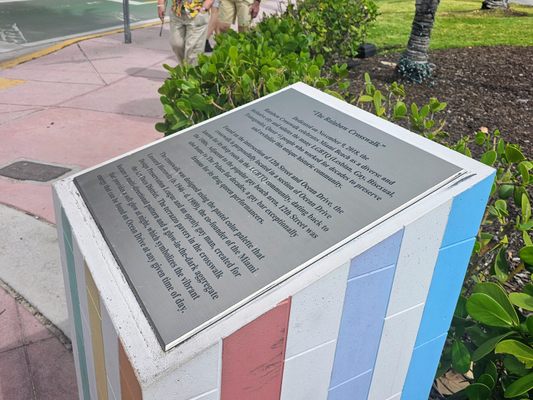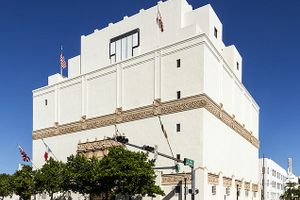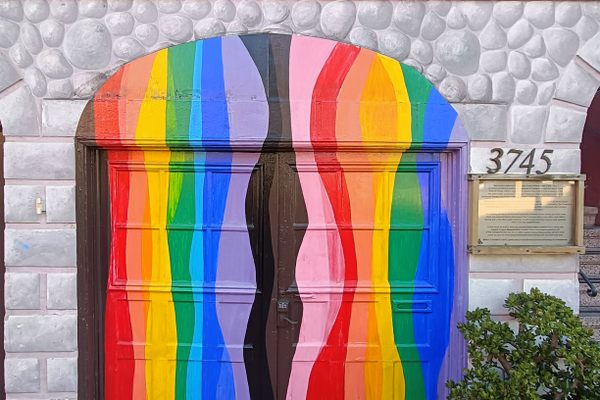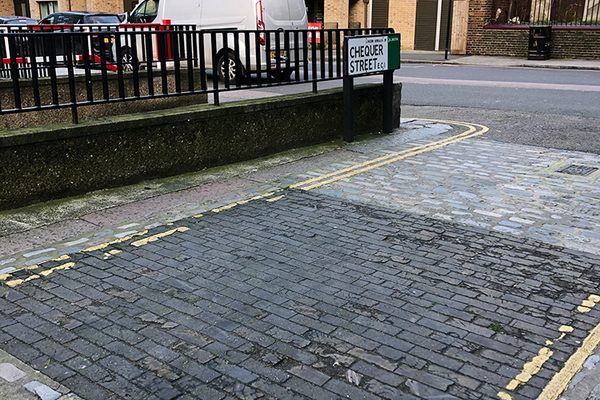About
Loud, garish, and bursting with color and life at all hours of the day and night, Miami Beach’s Ocean Drive is one of the world’s epicenters of queer culture. But it wasn’t always that way. Rather, South Beach had nearly faded away before being revived in the 1980s. To honor this revival, on Ocean Drive and 12th Street, a crosswalk has been paved in rainbow colors as a tribute to the LGBTQ+ community who are part of the fabric of the city’s culture, and in particular, to memorialize the out gay man who brought color back to Miami Beach.
The South Beach of the 1970s had been decaying for years. Its rows of Art Deco hotels and buildings were abandoned and neglected as the area steadily became a rundown retirement community. Crime was rampant and the city was on the brink of economic collapse. Into that world came Leonard Horowitz, a young furniture designer from New York City.
Horowitz had been cut off financially by his father, at least in part due to the resentment of learning that Lenny was gay. After moving to South Beach to live with his mother, he fell into the orbit of Barbara Baer Capitman, bonding over their shared love of the Art Deco movement and horror at the city's desire to tear down so many great but neglected structures. Together they founded the Miami Design Preservation League, an activist movement that would change the look of Miami Beach, and in turn, the world.
Horowitz, a designer, was most interested in reinvigorating this old-fashioned architecture with bold new colors. Art Deco buildings in their original incarnation were mainly white, but his interest was not just preserving the buildings as living fossils. He developed a palette of pastel colors that would accentuate the design of the structures. He tested the color scheme on Friedman’s Bakery, a formerly all-white building dating to the 1930s. Initially, much of the reaction ranged from skeptical to horrified. However, his persistence led to recognition first from the architectural community, and then the world, as programs such as Miami Vice broadcast this new "pastel paradise" to so many television sets.
Horowitz’s color palette would become a model for Miami Beach’s historic district and a trendsetter for a generation. Unfortunately, Lenny would not live to see the full revival of South Beach. Like so many gay men of that era, he passed away from complications of the AIDS virus in 1989. He was only 43 years old. The next year, a street would be renamed in his honor, and around that same time, Miami Beach’s Palace Bar opened, the only gay bar on Ocean Drive. Famous for its drag show brunches and celebrity spotting, the bar has become a pillar of the community.
The Palace Bar began painting a rainbow crosswalk on Ocean Drive in 2009 to mark its shows and the corner as a safe space for the community. The City later agreed to make a permanent landmark that would honor the impact that the LGBTQ+ community has made upon Miami Beach, and on November 9, 2018, the Rainbow Crosswalk was dedicated.
The crosswalk, designed by Savino Miller studio, is made from terrazzo pavers, arranged in a familiar Art Deco pattern, with rainbow colors designed to emit a faint glow at night. However, the crosswalk’s colors are not the traditional rainbow of the Pride flag. Instead, the colors were all chosen from Leonard Horowitz’s pastel palette. In this way, the crosswalk, like so much of Miami Beach’s architecture, is a physical reminder of the impact Lenny made upon the culture of the world.
Related Tags
Community Contributors
Added By
Published
April 12, 2024
Sources
- https://www.nytimes.com/1990/03/31/obituaries/barbara-baer-Miami%20Design%20Preservation%20League-69-dies-created-miami-art-deco-district.html
- https://www.miaminewtimes.com/music/palace-bar-in-miami-beach-celebrates-anniversary-and-opens-new-lounge-19016461
- https://www.wlrn.org/culture/2013-11-16/meet-the-man-behind-all-those-south-beach-pastels
- https://mdpl.org/archives/2021/07/the-colors-of-leonard-horowitzs-life/
- http://savinomiller.com/projects/ocean-drive-lgbt-crosswalk/
